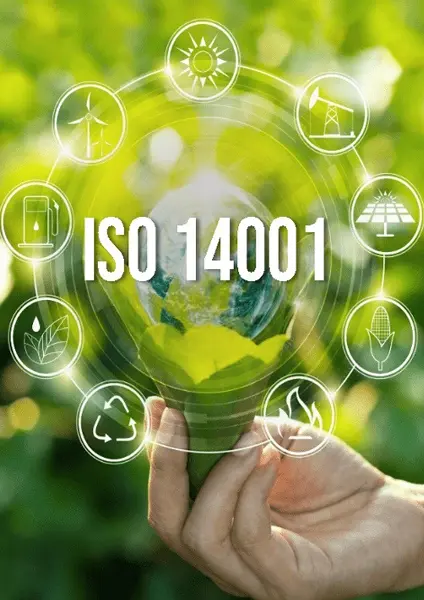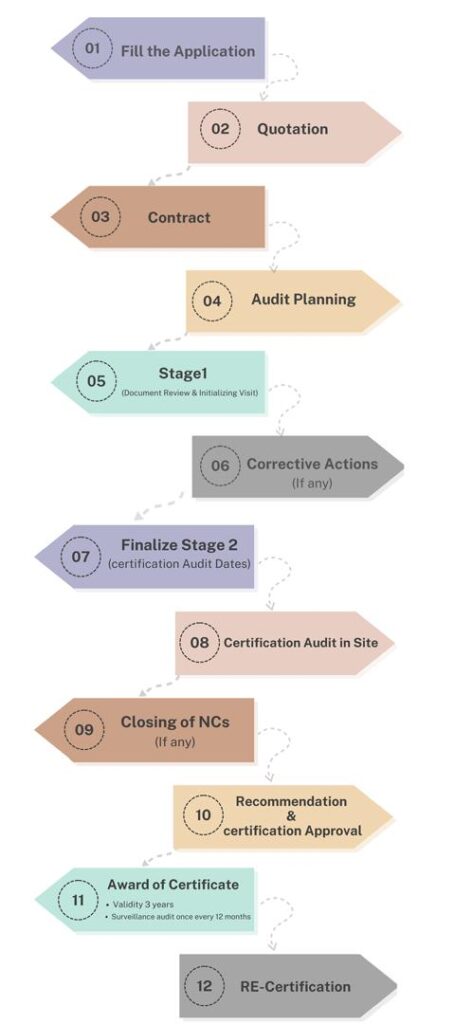In today’s world, environmental sustainability has become a top priority for businesses and organizations. ISO 14001:2015, an internationally recognized standard for environmental management systems (EMS), provides a framework for organizations to minimize their environmental impact, comply with regulations, and achieve sustainability goals.
This guide explores the fundamentals of ISO 14001:2015, its benefits, implementation steps, and practical strategies to help your organization align with global environmental standards while enhancing operational efficiency.
What Is ISO 14001:2015?
ISO 14001:2015 is part of the ISO 14000 family of standards, which focuses on environmental management. It provides a systematic approach for managing environmental responsibilities to ensure long-term sustainability.
The standard is applicable to organizations of all sizes and industries, helping them:
- Reduce waste and resource consumption.
- Comply with environmental regulations.
- Integrate environmental management into business operations.
ISO 14001:2015 follows the High-Level Structure (HLS), making it easy to integrate with other management systems like ISO 9001 (Quality Management) or ISO 45001 (Occupational Health and Safety).

Why Is ISO 14001:2015 Important?
Environmental concerns are no longer optional considerations—they’re essential for survival in a competitive and increasingly eco-conscious market. ISO 14001:2015 helps organizations address environmental challenges while unlocking business opportunities.
Key Benefits of ISO 14001:2015
- Improved Environmental Performance The standard promotes efficient resource use, waste reduction, and pollution prevention.
- Regulatory Compliance ISO 14001:2015 ensures organizations meet or exceed legal and regulatory requirements, reducing the risk of fines or penalties.
- Enhanced Reputation Certification demonstrates a commitment to sustainability, enhancing your organization’s brand and appeal to customers and stakeholders.
- Cost Savings Reducing waste, energy use, and inefficiencies directly translates to financial savings.
- Competitive Advantage Many clients and partners prefer or require ISO 14001-certified organizations.
- Employee Engagement Employees are more motivated when they see their organization contributing to sustainability and environmental stewardship.
Key Elements of ISO 14001:2015
The ISO 14001:2015 standard is built around the Plan-Do-Check-Act (PDCA) cycle, ensuring continual improvement in environmental performance. Key components include:
1. Context of the Organization
Organizations must consider external and internal factors affecting their environmental performance, including stakeholder expectations and legal requirements.
2. Leadership
Top management is responsible for integrating the EMS into the organization’s strategy and culture, demonstrating commitment and accountability.
3. Planning
Organizations must identify environmental risks and opportunities, set objectives, and establish action plans to mitigate negative impacts.
4. Support
This includes providing the necessary resources, training, and communication to ensure the EMS operates effectively.
5. Operation
Organizations must implement operational controls to address significant environmental aspects and manage emergencies effectively.
6. Performance Evaluation
Regular monitoring, measurement, and audits help assess the effectiveness of the EMS and identify areas for improvement.
7. Improvement
Organizations must act on non-conformities and continually enhance their EMS to achieve better environmental outcomes.
Steps to Implement ISO 14001:2015
1. Conduct a Gap Analysis
Assess your current environmental management practices against ISO 14001:2015 requirements to identify gaps and improvement areas.
2. Secure Leadership Support
Top management commitment is critical for the successful implementation of an EMS. Ensure leaders understand their roles and responsibilities.
3. Define Scope and Objectives
Clearly outline the scope of your EMS, including boundaries, and set measurable objectives aligned with your organization’s goals.
4. Identify Environmental Aspects
Determine activities, products, or services that interact with the environment and assess their impact. Focus on significant aspects, such as energy consumption, emissions, and waste management.
5. Develop Documentation
Prepare necessary documents, including:
- Environmental policy
- Procedures for operational controls
- Emergency response plans
6. Train Employees
Provide training to employees to raise awareness about environmental responsibilities and the importance of their role in the EMS.
7. Implement and Monitor
Put your EMS into action, ensuring processes and controls are followed. Use key performance indicators (KPIs) to monitor progress.
8. Conduct Internal Audits
Regular audits help identify non-conformities and provide opportunities for improvement.
9. Achieve Certification
Engage a certification body to evaluate your EMS and issue an ISO 14001:2015 certificate upon successful compliance.
Examples of ISO 14001:2015 in Action
Case Study: Manufacturing Sector
A manufacturing company implemented ISO 14001:2015 to reduce its carbon footprint. By optimizing energy use and waste management, the company cut operating costs by 15% and improved its reputation among eco-conscious clients.
Case Study: Hospitality Industry
A hotel chain adopted ISO 14001:2015 to manage water and energy consumption. By installing water-saving fixtures and using renewable energy sources, they reduced utility expenses and attracted environmentally aware guests.
Practical Tips for Implementing ISO 14001:2015
- Leverage Technology Use software tools to track environmental metrics, automate data collection, and generate compliance reports.
- Engage Employees Foster a culture of sustainability by involving employees in initiatives like recycling programs or energy-saving campaigns.
- Collaborate with Suppliers Work with suppliers to ensure they align with your environmental goals, such as using eco-friendly materials.
- Set Realistic Goals Start with achievable objectives and gradually expand your efforts to ensure long-term success.
- Communicate Success Share your environmental achievements with stakeholders through reports, social media, or marketing campaigns.
Challenges and Solutions
1. Resistance to Change
Employees may resist new processes. Address this by providing training and emphasizing the benefits of sustainability initiatives.
2. Resource Constraints
Small organizations may struggle with the initial investment. Focus on cost-saving opportunities, such as energy efficiency, to offset expenses.
3. Keeping Up with Regulations
Environmental laws can change rapidly. Stay informed through regular updates and consultations with experts.
Conclusion
ISO 14001:2015 is a powerful tool for organizations committed to sustainability and environmental stewardship. By adopting this standard, businesses can enhance their environmental performance, comply with regulations, and gain a competitive edge in the market.
Start your journey toward ISO 14001:2015 certification today to contribute to a greener future while improving operational efficiency and building stakeholder trust.
Certification Process
1- Completion of information related to the company name, company activities, the number of staff per work shift, website address, and branches.
2- Announcement of costs related to the requested certification issuance process.
3- Preparation and approval of the contract for implementation.
4- Planning the audit process and notifying the client for audit process.
5- reviewing documents to identify the client strengths and weaknesses in comparison to the established documentation.
6- Corrective actions for potential weaknesses.
7- Final planning for conducting the audit, registration, and certification issuance.
8- Conducting the on-site audit process at the client by the specialized team of the certifying company.
9- Corrective actions for potential weaknesses in the execution of the organization’s processes.
10- Recommendation for the issuance of a certification related to the client to the head office.
11- Achieving the related certification.
12- Renew after three years.


